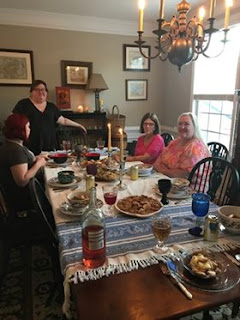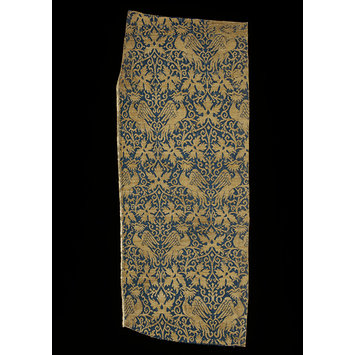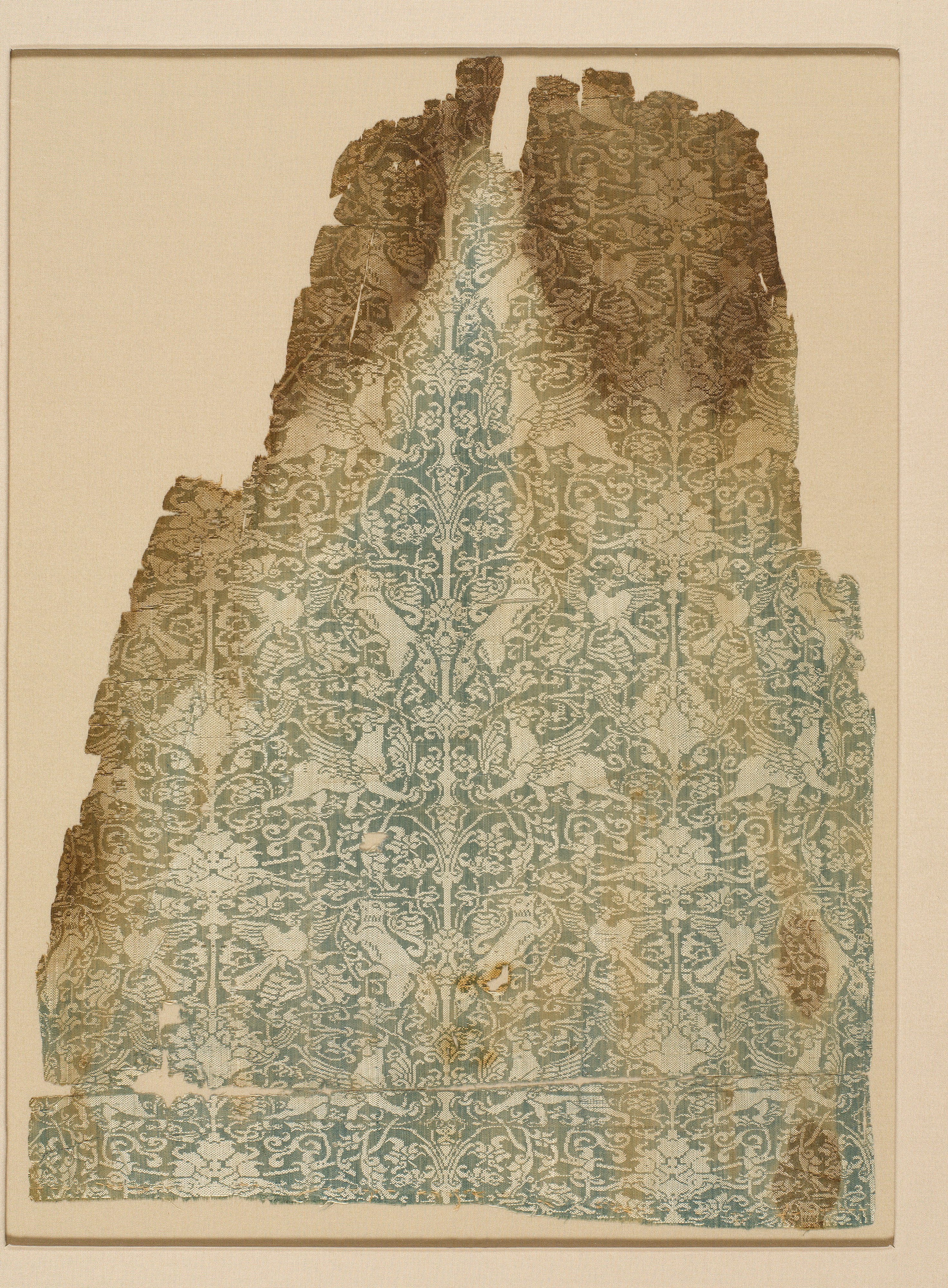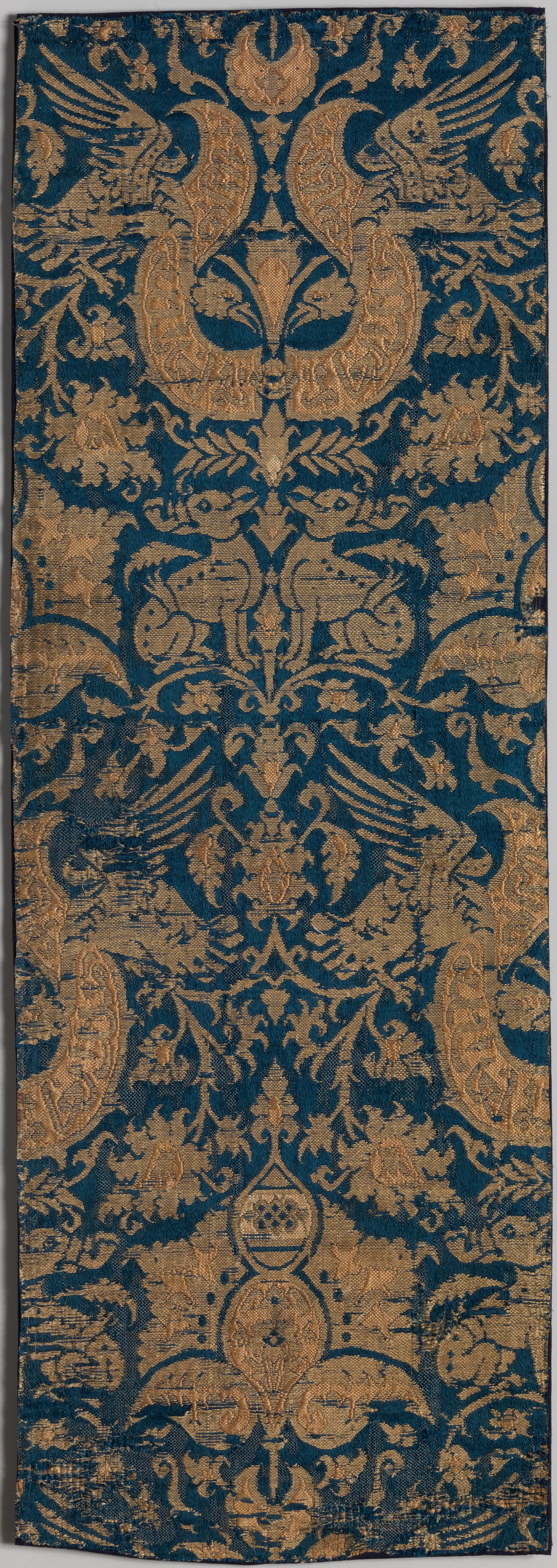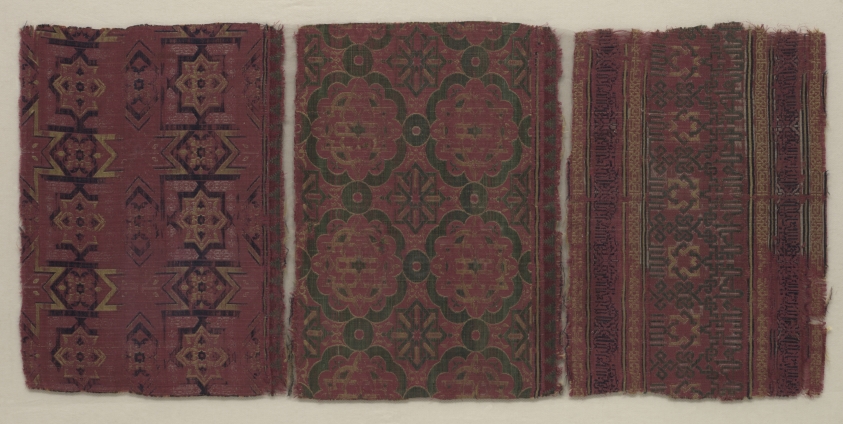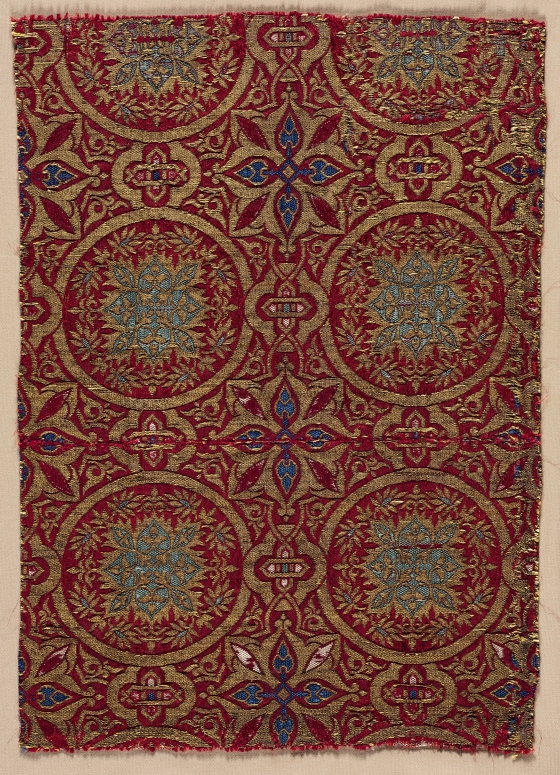So last weekend, I held a 15th century dinner. I became the Baronial A&S Minister this winter and I've been trying to do a weekend A&S activity every month to highlight a variety of arts & sciences. This month it was cooking and eating a 15th century meal.
I have a bookcase of historical recipe and foodways books but I don't get the opportunity to play with historical recipes as much as I'd like. I pulled
Early French Cookery and
The Medieval Kitchen off the shelf to plan the menu. I've cooked from both books before so I was pretty confident about the recipes. I thought about reacting some recipes myself, but real life was busy and while I love research, I have to admit redacting isn't something I really enjoy.
There were 9 people including Pietro and I so there was just enough room around our dining room table -which was set with a miscellany of our feast gear. For once, the cabinet of Renaissance dishes and cutlery came in handy!
The table set and ready for guests
photo credit: Jay Luo
Lafayette "helping" with the preparations
photo credit: Jay Luo
The plan was that I would come up with a menu, do the shopping (the cost of ingredients would be split by the group) and we'd all gather at my house to share in the cooking and eating. The plan worked surprisingly well and much fun was had whilst cooking. Admittedly, the wine might have helped a bit :)
Captains Brendan and Pietro and Lady Raven in the kitchen
photo credit: Maggi Johnson
Captain Brendan and Syr Artos cooking
photo credit Allison Halterman
Captain Brendan and Syr Kytte slicing parsnips under Syr Artos's supervision
photo credit: Maggi Johnson
After about 3 hours cooking, finally, it was time to sit down to eat!
Sabine and Lady Marin
photo credit: Jay Luo
Sabine, myself, Lady Marin and Lady Ruqayah
photo credit Trella Lyons
The Menu
Jacobin Sops
original source: Du Fait de Cuisine Chiquart 1420
redaction: Early French Cookery p. 106
Jacobin Sops
photo credit: Allison Halterman
This was the recipe I was most excited about and it was the star of the evening! It is essentially a rich beef bone broth (the redaction said to use beef broth and add soup bones while it simmered) simmered with a boqui garni of parsley, thyme, marjoram and hyssop. I'd never used hyssop (which is a bitter member of the mint family) in cooking before and had to use dried, but the local international farmer's market came through on fresh thyme and marjoram.
Under the broth was a thick chunk of a multigrain bread (I bought it in the Eastern European section of the farmer's market) toasted and topped with layers of white and dark meat chicken bits and small chunks of brie.
The broth was flavorful, the brie delightfully melted a bit in the broth and everyone commented how good it was. How good was it? Pietro and I ate left overs and I made another batch of broth to freeze so we can add it to our rotation of weeknight dinners. The broth is the only part that requires ingredients that are not normally in our kitchen; we usually have a loaf of bakery bread and brie in the house. And I am always looking for something to do with the left over rotesserie chicken from making his lunch salads. One note if you try this at home -the bread needs to have some density to it. We tried it with a lovely French boule, but it just became a soggy lump at the bottom of the bowl.
Chicken in Orange Sauce
original source: Libro de Arte Coquinaria Martino 1465
redaction: The Medieval Kitchen p. 115
Chicken in Orange Sauce
photo credit: Allison Halterman
This recipe is essentially roast chicken basted with a lemon, rose water and cinnamon sauce while cooked and served with the pan juices. I substituted chicken leg quarters for the whole roast chicken for economy and for making it easier to serve.
It was definitely edible but a little bland, I thought, and not especially memorable.
Easter Cabbage for a Meat Day
original source: Le Menangier de Paris, unknown 1393
redaction: Early French Cookery p. 265
Easter Cabbage for a Meat Day
photo credit: Allison Halterman
This called for cabbage to be boiled then baked with bread crumbs for thickening, sausage and beef stock. But there was no indication of what sort of sausage to use. Calling on the knowledge of the SCA Cooks group on Facebook, I learned that the closest thing would be a dried sausage, and that there were dried Italian fennel sausages that were relatively historically accurate. Farmer's market to the rescue I thought. Except that the Italian fennel sausages were $14 for 7 oz and I needed over a pound of sausage. Definitely not economical. So I substituted a pound of good bacon we buy at a butcher shop.
It was tasty and people seemed to like it, but I kept expecting to taste my standard cabbage and bacon recipe, which I prefer over this one. Still, this would be a good dish to make en masse for a feast.
Fried Parsnips
original source: Le Menangier de Paris, unknown 1393
redaction: Early French Cookery p. 267
Fried Parsnips
photo credit: Allison Halterman
The parsnips were sliced into thin rounds, dredged in a mixture of flour & poudre fine and then fried. I originally added this dish thinking it was an easy way to fill out the menu. However, peeling, slicing, dredging and frying parsnips in small batches was a lot more work than I anticipated. Thankfully, there were nine people in the kitchen. Still, they were tasty -slightly sweet from the poudre fine balanced nicely by the sauteed onions that the recipe called for the parsnips to be served with.
Pears in Syrup
original source: Le Menangier de Paris, unknown 1393
redaction: Early French Cookery p. 291
Pears in Syrup
photo credit: Allison Halterman
Pears in a honey and wine syrup sprinkled with wine soaked fennel seeds. I used bosc pears since they were the best bargain at the market and I realized when we started cooking that we probably should have made the fennel seeds in advance. We couldn't get the wine to evaporate and there wasn't enough time to let the seeds dry as the recipe called for. The wine was a cheap red. The recipe called for sweet red but since it was being mixed with honey anyway, I decided that it didn't need to be sweet. Another thing the recipe called for was cooking the pears in water or a red wine water mixture. We went with all wine (perhaps because by the time we started the pears we were drinking our second bottle) and I can't imagine the recipe any other way.
The recipe called to quarter the pears. We sliced them and they were still a bit awkward to eat. And yet if the pears were cut any smaller, I don't think the presentation would be as lovely. They were amazingly delicious still warm and the left overs were just as good chilled the next morning. This recipe is a keeper. The only think I might do differently is use ground fennel rather than seeds. The seeds looked pretty but were a bit gritty when you got a mouthful of one.
Honey-Nut Conserve
original source: Le Menangier de Paris, unknown 1393
redaction: Early French Cookery p. 290
Honey-Nut Conserve
photo credit: Allison Halterman
Walnuts spiced with fresh ginger and whole cloves in honey. In retrospect, I should have known better than to try this recipe. I'd
previously tried to make nucato, which is much the same thing and the result was a very tasty, very sticky glob that you had to chisel chunks off of to eat. The result of this recipe was much the same and it remained almost entirely untouched after dinner. I'm rather baffled by the failure and wonder if it's the high humidity in Georgia that is causing the issue. We ate the leftovers over th next week by prying pieces off with a fork. It was quite good although I might use ground cloves if I ever tried it again. Getting a whole clove in your mouth, even one covered in honey, is a little too much clove flavor for me.
Over all, it was a lovely evening with good food, good company and there was talk about doing it again, so I think the dinner was a success!
_______________________________________
Redon, Odile, Francoise Saban and Silvano Serventi. The Medieval Kitchen: Recipes from France and Italy. University of Chicago Press, 1998
Scully, D. Eleanor and Terrence Scully, Early French Cookery. University of Michigan Press, 2002














